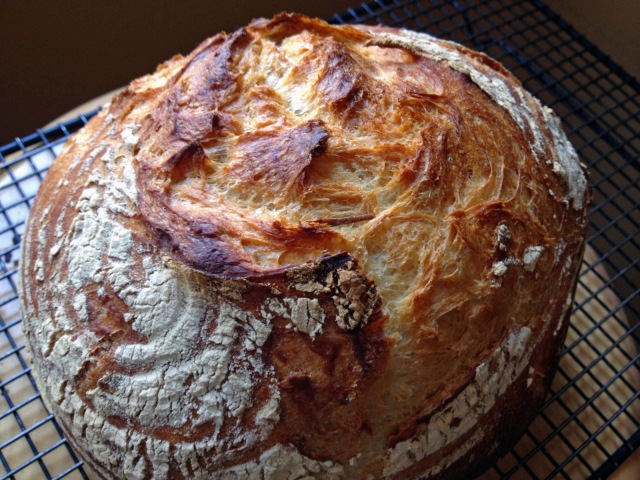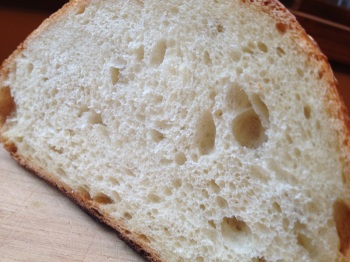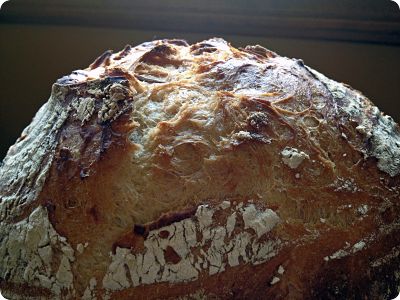I’ve always been fascinated by bread baking. For years I would read books and blogs, but get discouraged because the breads I fell in love with were all made with a sourdough starter. You know, that wild yeast thing. I would close the book, click away from the site, telling myself “why can’t they bake bread with regular yeast, like normal people?” It was so frustrating! Of course, if you follow my blog, you’ll know that now I love to walk on the wild side… 😉 Like many bread bakers, using commercial yeast almost feels like cheating. But, a bread leavened just with instant yeast can be amazing too. In this recipe, 80% of the formula comprises flour fermented overnight with a small amount of yeast. It comes from Flour Water Salt Yeast, by Ken Forkish.

WHAAAT? NO RECIPE?
Here’s the deal: I sent a couple of messages to Mr. Forkish asking his permission to publish the recipe, but got no answer. Of course, it’s quite possible he never checks his Facebook account. I know many people who don’t even remember having one! 😉 Without his permission, I don’t feel it is right to include the recipe. You can read more about this subject at the end of my post.
If you want to try his method, you can click here for a great variation on his recipe that includes barley flour in the formula. The technique is exactly the same, though. I intend to make it myself soon, as I am quite fond of barley flour.
Comments: Of all breads I’ve made, this one was by far the loudest singer. The noises it made while it sat on the counter, cooling, were unreal! Interestingly, Jane, the blogger behind The Wayward Oven, had this to say about her version of Forkish’s White Bread with 80% BIGA:
“It had a wonderful aroma and the crackling as it cooled was so loud I could – no exaggeration! – hear it across the room.”
Yeah, that was exactly the case! I also loved Forkish’s approach of letting the bread rise with the seam side down, and then invert it for baking, without scoring the crust. The bread opens in a natural, more rustic-looking way. This bread has a double personality: the taste and crust of a regular sourdough, and a crumb with the softer texture usually found in breads made with commercial yeast. Quite an interesting combination!
I am submitting this post to Susan’s Yeastspotting…
And now, for something completely different…
When I started blogging, I did not give too much thought about publishing recipes from cookbooks. I changed the wording around, gave credit, and felt it was good enough. As time passed, my views on the issue started to change, in part because I learned that some cookbook authors are completely against having their recipes out in the blogosphere, even if proper credit is given. Then, my virtual friend Joanna published a thoughtful article on her blog, and that pretty much did it for me. Ever since I read her post, I decided not to transcribe a recipe from any cookbook here, unless I get permission from the author, which unfortunately is not always that easy.
If I adapt a recipe, I will publish it and link to the “inspirational source”. In fact, that is a practice considered ok by copyright laws. A very good article on the whole subject was written by David Lebowitz and is available here. As to recipes published in food magazines, Fine Cooking editors told me they do not mind their recipes being published as long as a link is provided to the source. And other magazines – such as Food and Wine, Bon Appetit, Saveur, Cooking Light – have their content online for public access, so it is not a problem to blog on them.
ONE YEAR AGO: Zucchini-Spinach Soup
TWO YEARS AGO: Pollo en Mole en Cacahuate
THREE YEARS AGO: Thom Leonard’s Country French Bread


